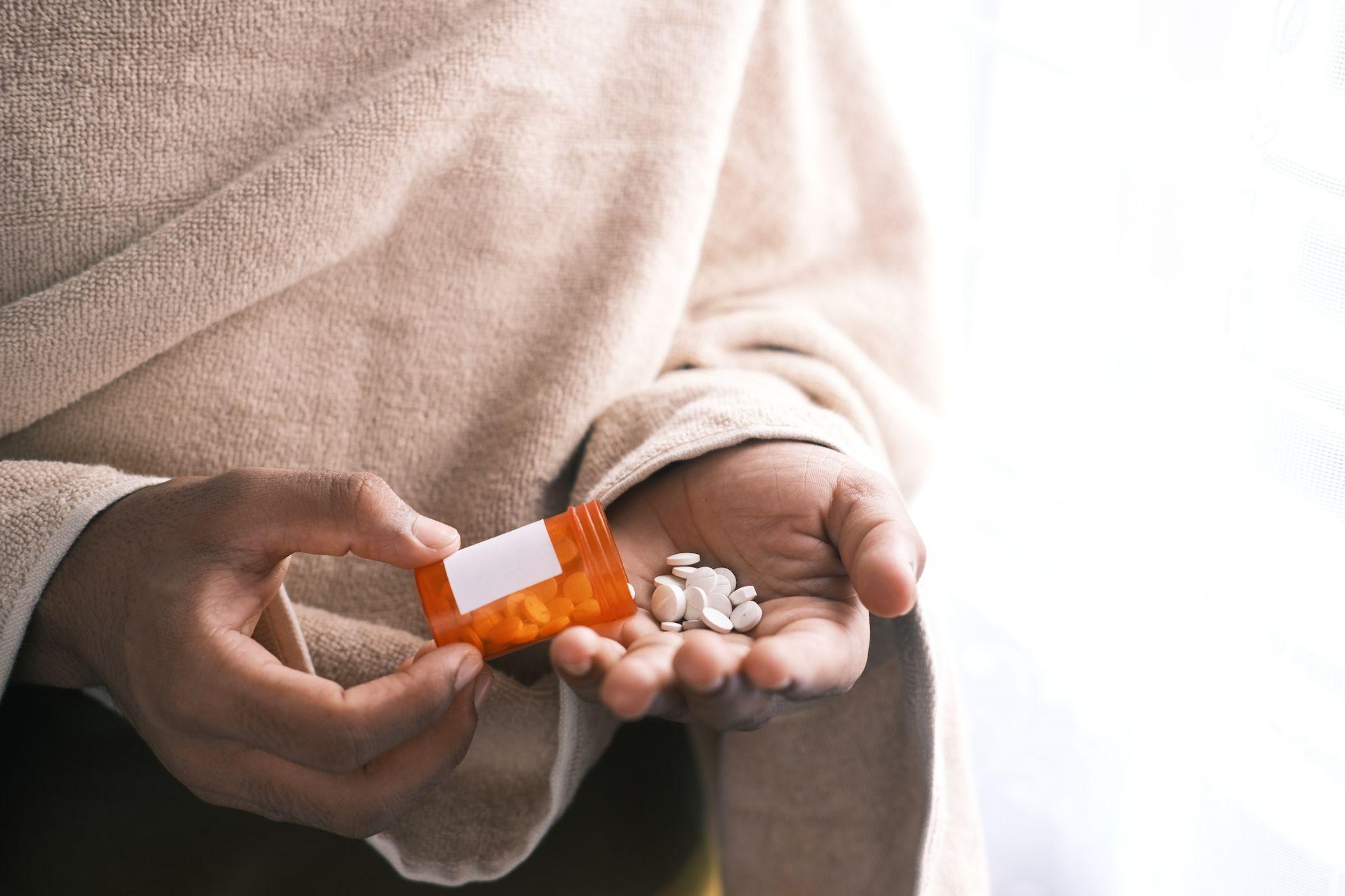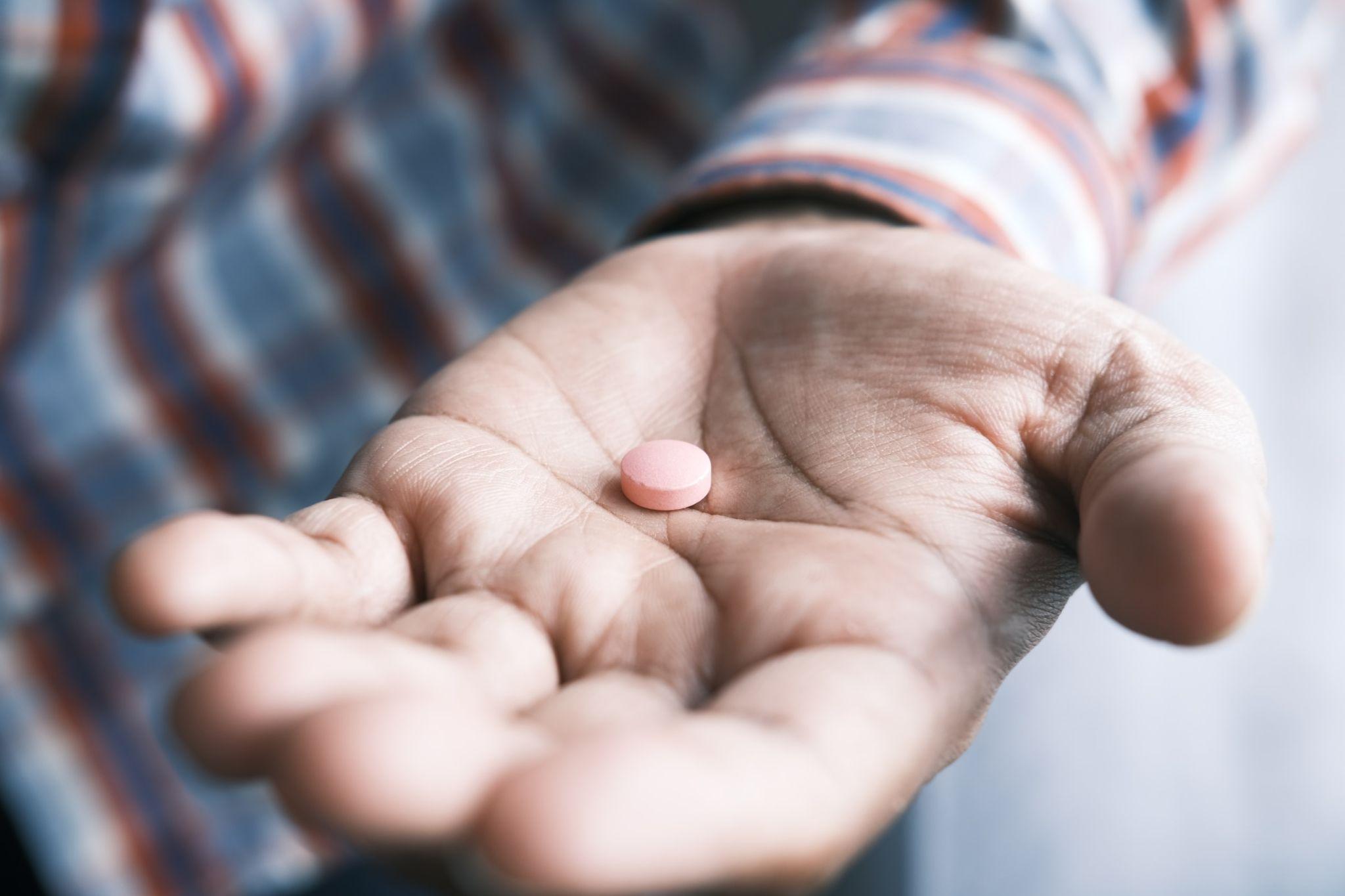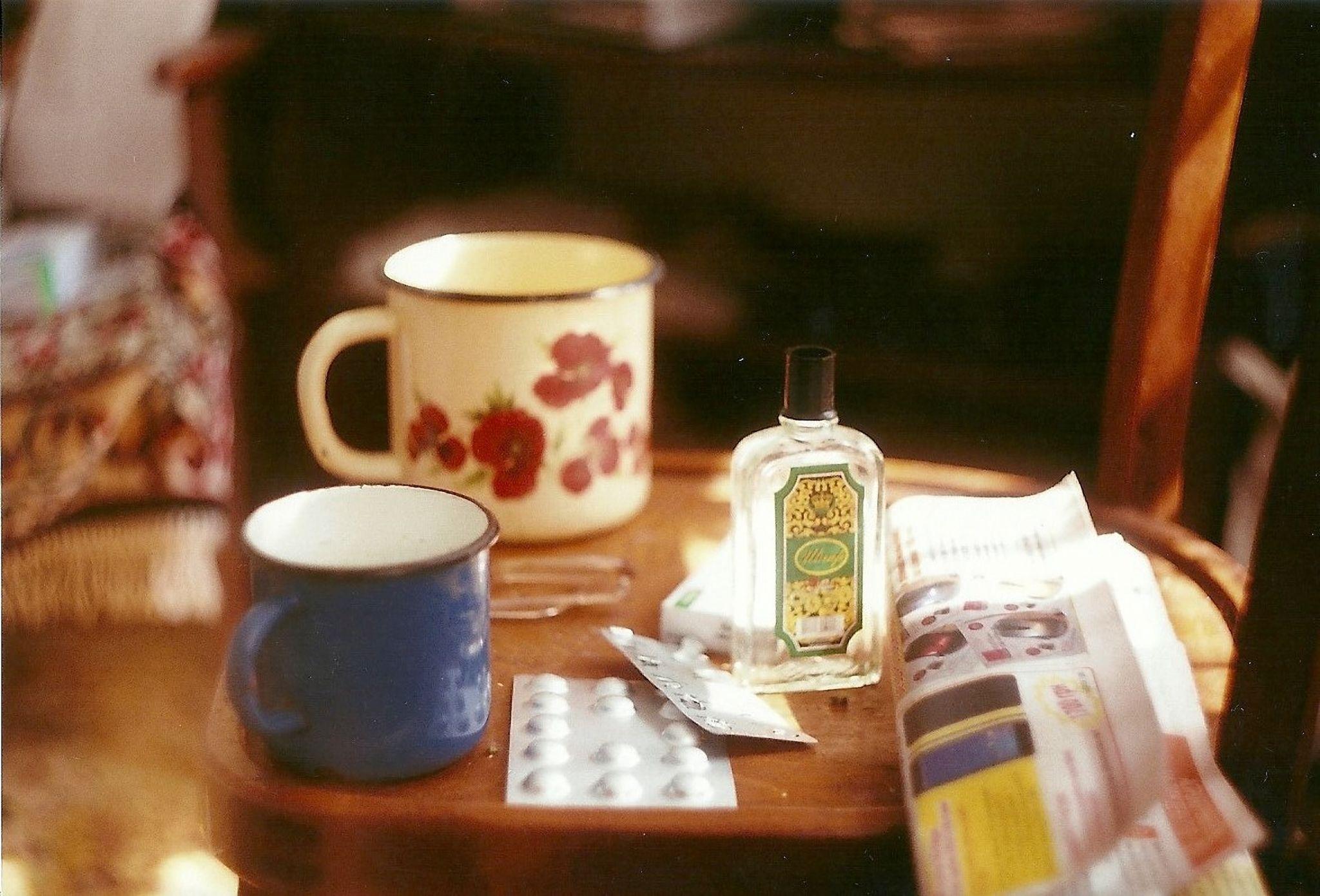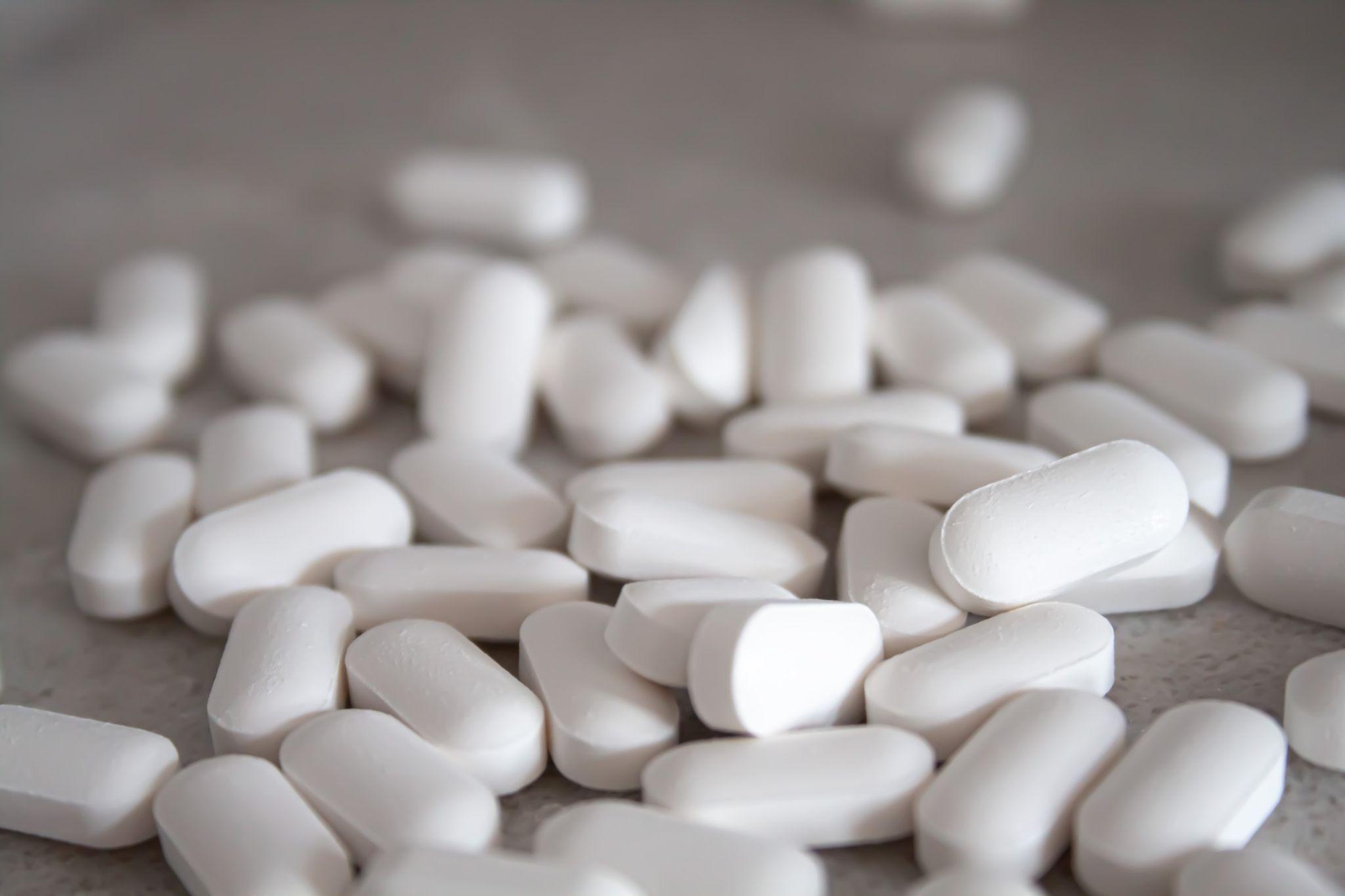What Happens When You Mix Xanax (Alprazolam) and Alcohol?
Mixing Xanax with alcohol increases the risk of serious, even fatal, complications such as respiratory depression. That’s because both Xanax and alcohol depress the central nervous system, creating synergistic effects that can prove deadly. Many people suffer adverse consequences after mixing drugs, such as Xanax and other tranquilizers, either alone or before drinking alcohol.
What Is Xanax?
Xanax, also known as alprazolam, is a trademarked prescription drug. It’s classified by the FDA (Food and Drug Administration) as a benzodiazepine drug, or tranquilizer, which acts as a central nervous system depressant. Doctors often prescribe Xanax to treat people who suffer from panic attacks and anxiety, and, in some cases, to control seizures. Official labels warn users not to mix Xanax with alcoholic beverages or other tranquilizers.
Xanax works by stimulating the release of a neurotransmitter called gamma-aminobutyric acid (GABA), which relaxes the user, giving rise to a tranquil feeling (hence the term “tranquilizer”) that can calm the symptoms of panic disorder. The anti-anxiety prescription drug also facilitates the release of dopamine into the brain. As dopamine levels increase, it can create a euphoric state to help people better deal with their anxiety or panic disorder.

Unfortunately, the effects of Xanax are often sought out by people without doctor’s prescriptions. Misusing Xanax can quickly lead to tolerance and dependence on its effects. Once this occurs, the person using Xanax may need to increase their dose to get the same effect as before, leading to addiction to and abuse of the drug. People who abuse Xanax are also more likely to act recklessly and mix alcohol with Xanax, often with dangerous results.
Alcohol is also considered a depressant. Many of the side effects of abusing Xanax are similar to those of abusing alcohol. As a result, using both substances at the same time can create powerful, and at times dangerous, effects on your body and mental health. The long-term effects of abusing both alcohol and Xanax may include everything from insomnia and agitation to depression and addiction.
The Effects of Xanax

As a central nervous system depressant, Xanax has powerful effects on the human body and mind. By increasing both the amount of GABA and dopamine in your body, Xanax can have the following effects:
- Feelings of relaxation
- Euphoria (extreme happiness)
- Reduced feelings of anxiety or panic
- Feelings of detachment from reality
- Sedation and drowsiness
Can You Mix Xanax and Alcohol?

Combining Xanax and alcohol is dangerous and harmful to your health in both the short and long term. Together, the two substances further amplify the health risks of using these substances, as well as the possibility of becoming dependent on either or both substances.
Since the effects of both substances are intensified, the likelihood of an accidental overdose is greater. Furthermore, the effects experienced and the dangerous consequences of consuming both together become even more pronounced.
These dangerous effects include:
Increased Sedation
Taken together, the sedative effects of both alcohol and Xanax are amplified, which could result in a powerful sedative effect that makes you prone to accidents, blackouts, fainting, and falling asleep or feeling incredibly drowsy throughout the day.
Impaired Cognitive Function
Similar to the increased sedative effects caused by mixing alcohol and Xanax, the combination can also lead to significant memory loss and lowered cognitive function. As central nervous system depressants, alcohol and Xanax impair your brain’s ability to process information, concentrate, or make decisions.
This makes you more prone to Xanax overdose as well, as you may forget whether you took a pill or how many you took while under the influence of alcohol.
Liver Damage
The damaging effects of alcohol on your liver are common knowledge. However, the combination of Xanax and alcohol can put even more strain on your liver and lead to cirrhosis if both substances are abused long term. A liver cirrhosis diagnosis is serious and could be fatal if not detected early enough or remedied with a liver transplant.
Respiratory Depression
Due to the sedative effect of Xanax and alcohol on your central nervous system, combining these drugs could make your breathing shallow and slow, which can be dangerous. If your body does not get enough oxygen, it could lead to organ or tissue damage, coma, or even death.
The Dangers of Irresponsible Xanax Use

The dangers of mixing Xanax and alcohol aren’t only limited to the Xanax and alcohol interactions mentioned above. For an addict, the amount of Xanax and alcohol needed to achieve certain feelings like numbness, euphoria, relaxation, or drowsiness requires taking greater amounts of Xanax and consuming more alcohol.
This can additional serious risks, including:
- Blackouts
- Memory loss
- Prolonged dizzy spells
- Respiratory problems
- Central nervous system problems
- Coma
- Death
What if I Skip Xanax Doses to Consume Alcohol?
You should never skip taking prescribed doses of Xanax in favor of consuming alcohol. Even skipping one dose here and there, and believing you can consume alcohol, is dangerous to your health and well-being. Xanax is a time-released drug and can remain within your body for several days after fully stopping the medication.
So even if you haven’t taken your usual dose of Xanax and have chosen to drink alcohol instead, you could still experience the dangerous interactions of these substances as alcohol reacts with the Xanax still in your body.
Another danger of skipping a Xanax dose in favor of alcohol is that you are no longer following your doctor’s prescription that was made specifically with your case in mind. As a result, you may be tempted to take double doses to make up for missed ones or discontinue your use entirely.
If that happens, you are either in danger of overdosing on Xanax or going through withdrawal and experiencing symptoms similar to those of people suffering from alcoholism.
Should you wish to stop using Xanax, you should work with your doctor or healthcare provider to wean you off gradually.
How Xanax Dependency Relates to Alcoholism

Mixing alcohol with Xanax or using Xanax for a long period of time can lead to addiction and dependence on the feelings those drugs created.
Some people who previously took Xanax and miss the effects they experienced can turn to drinking as a substitute drug, even if they did not consume alcohol while taking Xanax.
In order to achieve the same effects, people tend to consume a larger amount of alcohol and eventually become alcoholics.
If this doesn’t happen, but the person still craves the effects of Xanax, they may even attempt to purchase the drug illegally, leading to a host of other risks like taking counterfeits, becoming addicted, or facing legal consequences.
What Is the Recommended Treatment for Alcohol and Xanax Dependency?
The interactions and effects of abusing alcohol and Xanax can be complex. That’s why seeking professional help for your dependence or addiction to either of these substances is crucial. At Yellowstone Recovery Center, we offer dedicated drug and alcohol rehab programs that can help you overcome addiction and get on the road to lifelong recovery.
If you have a long history of Xanax or alcohol use, you will be placed in a detoxification program during which you will go through withdrawal under caring, close supervision. Once your system has cleared itself of the substances you abused, our team will help you decide what the best next option is for your recovery.
Should you need more intensive care, you will be referred to our residential inpatient treatment program, where you reside onsite and attend regular therapy and relapse prevention sessions. Similarly, our outpatient programs also involve therapy and counseling, but allow you to live off site with family or friends or on your own if your home is stable and supportive of your recovery.
We also provide access to sober living homes if you need somewhere safe and secure to live while attending treatment.
How Yellowstone Recovery Can Help

At Yellowstone Recovery, we offer a variety of treatment modalities, including experiential therapy, rehab specifically for women or young people, and dedicated drug and alcohol rehabs. We understand that even though doctors instruct their patients not to use Xanax with alcohol, the mixing of these drugs is all too common and destructive to your health and mental well-being.
If you or someone you love has developed a dependency on either Xanax or alcohol, or they are using both drugs simultaneously, it is important to seek help from our Orange County rehab center. Our treatment programs are designed to treat a range of drug addictions, as well as alcoholism, and we know that helping you takes more than just a one-size-fits-all approach. That’s why we work with you to create a tailor-made treatment program that fits your needs.
Overcoming addiction requires a strong support system and experienced guidance in a caring environment. To take your first step to lifelong recovery from Xanax addiction, drug abuse, or alcoholism, get in touch with our experienced team today at (888) 418-4188 to learn more about the treatments we offer and how we can help you.
- Treatment Options
- Program Curriculum
- Program Services








